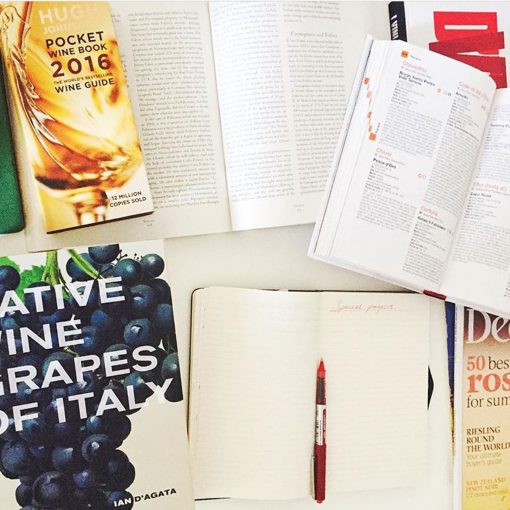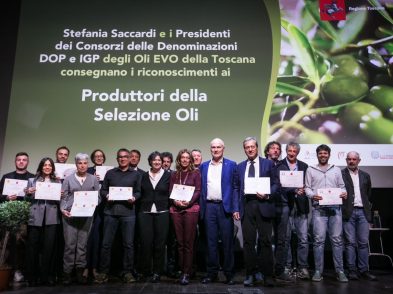He’s one of the world’s favourite wine writers, an expert in native grape varieties and scientific director of Vinitaly International Academy, but he’s also a trained medical doctor specialized in pediatric gastroenterology and pediatric liver transplants who studied at Cincinnati, Harvard and Montreal universities. I spoke to Ian D’Agata about his life and work ahead of top international wine fair Vinitaly held in Verona this April.

Emily O’Hare: Ian, you went from being a medical doctor to a wine writer? How did that transition happen?
Ian D’Agata: Medical doctors have an incredibly long and distinguished history as literary figures. Would you believe me if I told you that Anton Chekhov was a practising physician most of his life? Many other famous names, and I’ll give you just a very short list here, but I could go on and on and on, include François Rabelais, Sir Arthur Conan Doyle, John Keats, John Locke, Michael Crichton… I’ll never make the millions Crichton did by writing Jurassic Park, but I am extremely proud of my book Native Wine Grapes of Italy.
EOH: Going back to the beginning before we look to the future, where were you born?
IDA: My parents are both Italian; in fact, everyone in my family is Italian. My sister and I were born in Canada because my father was training there in medicine and he and my mom thought it a good idea to ensure the kids would have two passports each one day. I left Canada when I was about three years old and so began life as I remember it in Italy. I returned to Canada in my teen years and did my postgraduate university work in the US for I always wanted to live there, but I have spent the greatest part of my life in Italy, in Rome where I currently reside.
EOH: When and how did wine get onto your radar? Was it a “lightning bolt” moment or a slower love story?
IDA: It was a lightning bolt. I hear it’s almost always like that with people who have turned wine into their livelihoods. My father had a well-stocked cellar, but we rarely drank wine at home since my father was a psychiatrist and had seen too many families ruined by alcoholism. We drank water with our meals. One day in Toronto some teenage Canadian friends came over and they wanted to drink a good Italian wine, and as my father had always spoken highly of Barolo and Gattinara, I went looking for one such bottle. As destiny would have it, I picked an outstanding 1971 Barolo that immediately rang all my bells. I had never tasted anything that good, and from then on I was hooked, forever.
EOH: When and what made you decide to make wine your career?
IDA: Back in the early 1980s, you couldn’t make a living as a wine writer. Everyone in my family is an MD, so I decided to become a pediatrician, but all the while I kept attending wine courses and writing about wine. I never stopped and actually increased that part of my daily life year after year.
EOH: Is it hard to write “critically” about wineries and winemakers with whom you have friendships?
IDA: I learned in medicine that you have to be empathetic, not sympathetic. I listen and I learn, but my allegiance is to my readers, who trust me and will stock their cellars with my recommendations. I’ll go even further and say my allegiance is also to the grape varieties that were here on Earth long before I was and will still be here long after I am gone. Their future needs protecting! I owe it to them to make sure that some overly creative or ultra cool hipster producer doesn’t turn them into a joke or into something they never were. Ribolla Gialla, which is now being made as a white, pink, orange, macerated, still, sparkling and amphora-aged wine, is case in point. They have thrown everything but the kitchen sink at that poor grape.
EOH: Do you think the point system as a means of rating wines is outdated?
IDA: It’s unfortunate there is so much emphasis on scores. I would never think of rating Psycho v. Casablanca v. Star Wars. Or The Last Supper v. Guernica v. Lady with the Ermine. But what can you do? If that is what people want, fine.

EOH: How long did it take you to write your award-winning book Native Wine Grapes of Italy?
IDA: Four years of writing, fifteen of research. It cost me a ton of life and twenty pounds, since all I did was eat and write, write and eat for most of that time. I put on weight I’m still trying to lose. Easier said than done.
EOH: Are you optimistic for the future of wine and winemaking in Italy?
IDA: I recently wrote an article for international wine magazine Decanter enthusing about just this. Now is the best of times for Italian wines. Over the last ten years there has been an amazing coming of age. There is a generation of talented young individuals who are determined to make a wine that speaks of Italy, of their specific part of Italy, and government institutions and consortia are supportive, sponsoring studies to explore the soils and microclimates in specific viticultural areas and introducing more logical classifications.
EOH: Which Tuscan producers are you enjoying at the moment?
IDA: A long list! Montevertine, Monteraponi, Fèlsina, Fontodi, Isole e Olena, Le Cinciole, Badia a Coltibuono, San Giusto a Rentennano, Castello di Ama, Villa Calcinaia, I Fabbri … and that’s just in Chianti Classico!
EOH: Evidently you feel protective of this future as in 2015 you formed an educational wine program with your colleague and friend Stevie Kim: the Vinitaly International Academy.
IDA: Yes, the Academy aims to increase knowledge about Italian grapes and wines amongst opinion leaders abroad. At VIA, we aim to give people the basics or the essential information that can be used to explain grapes and wines to others in a logical, useful way. At least that is my hope!








